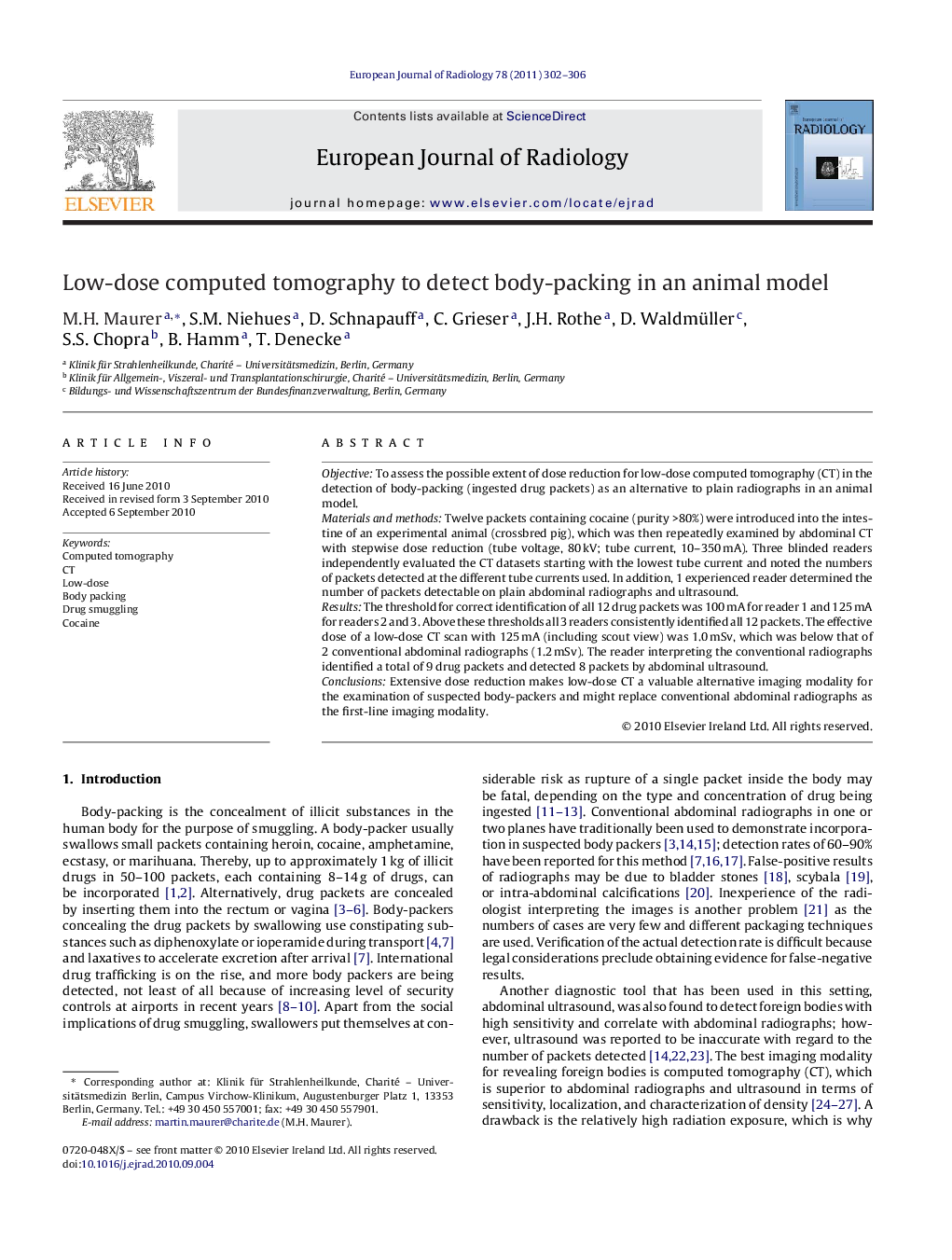| Article ID | Journal | Published Year | Pages | File Type |
|---|---|---|---|---|
| 4227125 | European Journal of Radiology | 2011 | 5 Pages |
ObjectiveTo assess the possible extent of dose reduction for low-dose computed tomography (CT) in the detection of body-packing (ingested drug packets) as an alternative to plain radiographs in an animal model.Materials and methodsTwelve packets containing cocaine (purity >80%) were introduced into the intestine of an experimental animal (crossbred pig), which was then repeatedly examined by abdominal CT with stepwise dose reduction (tube voltage, 80 kV; tube current, 10–350 mA). Three blinded readers independently evaluated the CT datasets starting with the lowest tube current and noted the numbers of packets detected at the different tube currents used. In addition, 1 experienced reader determined the number of packets detectable on plain abdominal radiographs and ultrasound.ResultsThe threshold for correct identification of all 12 drug packets was 100 mA for reader 1 and 125 mA for readers 2 and 3. Above these thresholds all 3 readers consistently identified all 12 packets. The effective dose of a low-dose CT scan with 125 mA (including scout view) was 1.0 mSv, which was below that of 2 conventional abdominal radiographs (1.2 mSv). The reader interpreting the conventional radiographs identified a total of 9 drug packets and detected 8 packets by abdominal ultrasound.ConclusionsExtensive dose reduction makes low-dose CT a valuable alternative imaging modality for the examination of suspected body-packers and might replace conventional abdominal radiographs as the first-line imaging modality.
